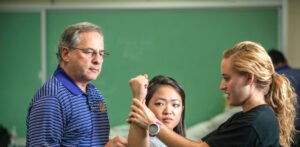
- Home
- Academics at HSU
- Graduate Programs
- Doctor of Physical Therapy
Doctor of Physical Therapy
Start making a difference in the lives and health of others with a Doctor of Physical Therapy degree. Hardin-Simmons University offers a service-focused DPT program that boasts 100% employment and 98% graduation rates.
Physical therapy is among the fastest growing occupational fields in the country. As one of the leading DPT programs in Texas and the nation, our graduates are in high demand in nearly every industry. You’ll work closely with our nationally renowned, award-winning faculty, and get hands-on experience beginning your first week of classes with the clinical rotations of your choice.
Our program combines a dedication to excellence in the practice of physical therapy with Christian faith and values — preparing you to be a respected, compassionate and skilled doctor of physical therapy. When you graduate, you’ll be prepared to make lasting impacts on the health of individuals and communities around the world.
Service Learning in the DPT Degree Program
Earn your Doctor of Physical Therapy degree from HSU and graduate with meaningful stories and experiences that will strengthen your faith and PT skills for the rest of your career as a doctor of physical therapy.
Through our PT Ministries clinics, you’ll provide pro bono health care and outreach to people in under-served places around Texas, the nation and the world. As a student in the only DPT program in the country with a partnership with Joni and Friends International, you’ll also participate in our Family Retreats camps for families with children who are disabled, as well as Wheels for the World, fitting and building custom wheelchairs and assistive devices for adults and children in countries such as Peru and Uganda.
In addition, you’ll get chances every day of your DPT program to demonstrate our core mission to “serve Christ by serving others.” These include:
- Annual Mission Trips
- Kinesiotaping Seminars
- Manual Therapy Courses
- Dry Needling Courses
- Community Service
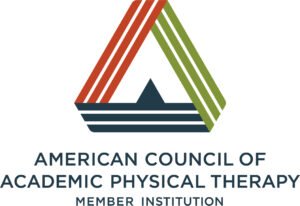

In 2022, 100% of HSU’s DPT students are members of the American Physical Therapy Association, earning HSU a Reach100 Platinum Award.
Program Contact
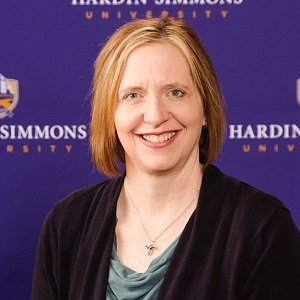
Degrees
Why Earn Your DPT Degree at Hardin-Simmons?
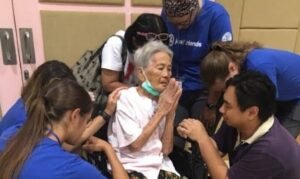
Accredited and Nationally Recognized DPT Program
There are many reasons why we are one of the most well-regarded DPT programs in Texas. Our Doctor of Physical Therapy Program is accredited by the Commission on Accreditation in Physical Therapy Education (CAPTE), which means that your DPT degree will be respected by employers and clients for its quality education. In addition, US News and World Report has recognized HSU in its Best Values in Schools list and our physical therapy program as a distinctive graduate program.
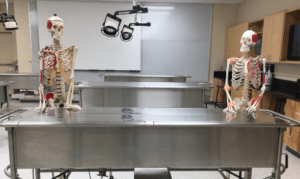
Exceptional Career Preparation
We take great pride in preparing our DPT students for the exams and demands required to succeed as doctors of physical therapy. In fact, we’ve maintained a 100% employment rate since our program began 27 years ago. You can enter our program knowing that you will have the best chances of finding a rewarding career after graduation.

Community Building
From your first day to well beyond graduation, you’ll be supported by a world-class community of peers, faculty mentors, and advisors. Our small class sizes and service-learning opportunities let you create lasting relationships with other DPT students both inside and outside the classroom. You’ll also benefit from the mentorship of faculty members who are leaders in their fields, winning awards for their service, research, and teaching.
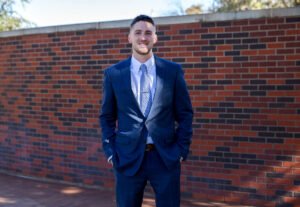
Jacob Hamilton's Story
- Doctor of Physical Therapy
"The fact that our professors are still involved in a clinic really showed me how to keep up my strong work ethic."
Read full storyWhat Can You Do With a Doctor of Physical Therapy Degree?
According to the Bureau of Labor Statistics (BLS), employment for doctors of physical therapy is expected to grow by 21%, making it one of the fastest growing occupational fields in the country.
Physical therapists work in a wide variety of fields of practice: community outreach, pediatrics, sports medicine, and entrepreneurship, to name a few. As one of the leading DPT programs in Texas, our graduates have gone on to work in top healthcare facilities as clinicians and managers, as well as in the military, the VA system and Indian Health Services in Alaska and Arizona. They are employed by prestigious organizations, including Cook Children’s Hospital, Baylor, the New York City Ballet, and Disney Cruises. Many also go on to start their own PT clinics.
Jobs for Doctor of Physical Therapy Graduates
- Clinical researcher
- Sports physical therapist
- Pediatric physical therapist
- Educator
- Consultant
- Entrepreneur
Salary for Graduates
According to the BLS, doctors of physical therapy earn an average salary of $91,000.
Program Details
Requirements for the DPT Degree Program:
- A Doctor in Physical Therapy (DPT) degree is challenging and demanding. To best ensure your success and preparedness for the DPT program, the HSU faculty strongly recommend limiting the number of science/stat courses completed at a community college and suggest taking your sciences at a 4-year institution. HSU PT will not accept science/stat prerequisites obtained by way of high school dual credit, CLEP, AP or college online courses.
- To ensure an easier transition from undergraduate to doctoral work, the HSU-PT Department HIGHLY recommends completion of at least one upper level (300-400) human biology course such as advanced anatomy, human physiology, pathophysiology, genetics, etc.
- Psychology course grades are not included in the prerequisite GPA computation.
- Coursework older than 10 years will not be accepted.
Other Requirements:
- Completion of the Graduate Record Exam (GRE) – competitive scores should be above 148 on the verbal and quantitative sections, and above a 3.0 on the writing; the average GRE of students admitted to the program are >145 on the verbal and quantitative sections and 3.0 on the writing.
- Observation under a U.S. licensed physical therapist; preference is for a minimum of 40 hours in two different settings (outpatient, inpatient, home health, skilled nursing, neurorehab, etc) under two different physical therapists, OR a minimum of 100 hours in one setting. The average observation hours of admitted students typically exceeds 400.
- A record of service and leadership over the last 3 years.
- A personal interview with PT Faculty and current students.
- Ability to meet the Minimal Required Abilities (see tab below for details)
- Three letters of recommendation: One letter from a professor, one separate letter from a U.S. licensed physical therapist, and one from anyone else who knows the student well.
All documents must be sent to PTCAS, not HSU PT (official GRE scores, letters of recommendation and record of service and leadership).
For more specifics on prerequisites, please click the following link to the HSU PTCAS application: https://ptcasdirectory.apta.org/420.aspx
Two Biology courses OR two Anatomy and Physiology courses
- General Biology I with lab followed by General Biology II with lab
- Or A&P I with lab followed by A&P II with lab
Two Chemistry courses for science majors
- Chemistry I with lab
- Chemistry II with lab
Two Physics courses for science majors
- Physics I with lab
- Physics II with lab
One Statistics course
Two Psychology courses
- One course of Introductory OR General Psychology
- One course of Life Span (developmental) OR Abnormal Psychology
Highly Recommend
- Any upper-level course (300,400) that will prepare students for Doctoral Level Cadaver Anatomy (Anatomy or Physiology is preferred)
Average 2-Year Pass Rates:
| Year | First-Time Pass Rate | Ultimate Pass Rate |
| 2021 | 35/39 = 90% | 38/39 = 97% |
| 2022 | 35/36 = 97% | 36/36 = 100% |
| 2023 | 34/38 = 89.5% | TBD |
| HSU 2 Year Average | 69/74 = 93% | 74/75 = 98.7% |
| National Average | 86.2% | 96.2% |
Average 2-Year Graduation Rates:
| Year | #Admitted | # Graduated | Percentage |
| 2022 | 40 | 36 | 90 |
| 2023 | 40 | 38 | 95 |
| Total | 80 | 74 | 74/80 = 92.5% |
Average 2-Year Employment Rates:
| Year | # Graduated | # Employed | Percentage |
| 2022 | 36 | 36 | 100 |
| 2023 | 38 | 38 | 100 |
| Total | 75 | 75 | 100% |
Many doctors of physical therapy choose to earn their Bachelor of Science in Biology before entering a DPT degree program. That’s why we’ve made it easy to earn both your BS in biology and DPT degree with a fast-track program. You’ll earn your bachelor’s in just three years and your DPT in 2.5. Imagine starting college at 18 and becoming a doctor of physical therapy before you’re 26!
The Doctor of Physical Therapy Program at Hardin-Simmons University is accredited by the Commission on Accreditation in Physical Therapy Education (CAPTE), 3030 Potomac Ave., Suite 100, Alexandria, Virginia 22305-3085; telephone: 703-706-3245; email: accreditation@apta.org; website: http://www.capteonline.org. If you need to contact the program/institution directly, please call 325-670-5860 or email ptoffice@hsutx.edu.
Prepare for your future in Physical Therapy. Qualified invited applicants and others interested in learning more the Hardin-Simmons University DPT program will have the opportunity to attend a preview day held on Fridays during the school year.
Dates*
- November 10, 2023
- January 26, 2023
* Preview dates are subject to cancellation if all seats in the cohort are filled and/or later interview dates may be for alternate spots only. Applicants are encouraged to apply early in the process. According to the PT Traffic Rules, seat deposits do not have to be made until January 15, but applicants may secure seats prior to that date.
Check out all the great reasons to attend an HSU preview day if you are invited as an applicant:
- Gain knowledge of the PT profession
- Observe the HSU PT clinic offered to HSU employees and students
- Learn about HSU & Abilene
- Learn the requirements to earn a Doctor of Physical Therapy degree
- Meet faculty & students
- Tour our state-of-the-art facilities
- If qualified, interview for a seat in the DPT program
Program Cost for Class Beginning Fall 2024
Non-refundable seat deposit: $1,200
The deposit is due at the time the applicant accepts the offer of a position in the program and will go toward the first semester’s tuition. The deposit is forfeited if the applicant accepts and later relinquishes a seat in the program prior to the start of classes.
Projected Tuition per Semester = $13,174 (7 terms from start to completion of the degree)
Projected Total Program Cost = $92,220 (28 months)
*Students cannot purchase courses in these programs at an hourly rate. However, the total cost of the program divided by the number of hours of classwork needed to complete the program, equals $774.96 per credit hour.
Additional Costs
Textbooks (estimated)
Year 1: Fall Semester = $1,500
Spring Semester = $500
Summer Semester = $500
Year 2: Fall Semester = $500
Spring Semester = $500
Summer Semester = $0
Year 3: Fall Semester = $500
Supplemental Supplies/Materials
- PT Kit/Clinic Shirt/CPR/Drug Test = $420
- EXXAT/PTMACS = $200
- APTA & Texas Student Membership (annual) = $90
- ExamSoft Fees = $150
- Immunizations (depends on what student currently has) = Variable
- Projected University/Program Fees per Semester = $1,500 (12 hours or more)
- Housing and Living Expense = Variable
- TherapyEd Book, Prep Test, and Course (required in final year) = $355
- Doctoral Graduation Regalia = $109
- Texas Licensure Application and Testing Fees = $853
Financial aid is limited for graduate students. However, additional information concerning financial aid may be obtained by contacting the Financial Aid Office at (325) 670-1205 or (800) 568-2692.
Learn more about what makes up cost of attendance and how to request a cost of attendance adjustment when additional education-related expenses beyond a student’s standard COA are incurred.
Listed below is a brief description of most of the financial assistance programs available to students pursuing graduate degrees. For additional specific information, consult with the Office of Financial Aid or other office listed.
| Name of Program | Type | Administrative Office/Area | Amount |
| Abilene Chapter AAUW Jewel Davis Scarborough Scholarship | Scholarship for female graduate students attending Abilene colleges | Application available through the Financial Aid offices at all Abilene colleges (325) 670-1206 |
$1,000 |
| American Academy of Physical Therapy Scholarship | Scholarships for minorities enrolled in an entry-level degree DPT program and in their final year of training | American Academy of Physical Therapy Scholarship P.O. Box 196 Hazel Crest, Ill 60429 888-717-AAPT (2278) https://www.americanacademypt.com/scholarships |
$1,000/ yr |
| AMBUCS | Scholarships for PT Students enrolled in a masters or doctorate program | AMBUCS Scholarships P.O. Box 5127 High Point, NC 27262 (800) 838-1845https://ambucs.org/scholarship-program/ |
$600-$1,500/yr.;
$6,000 2-yr. award |
| APTA Minority Scholarship Award | Minority PT students enrolled in the final year of their professional program (Member of APTA) | APTA 1111 North Fairfax Street Alexandria, VA 22314-1488 (800) 999-2782 https://www.apta.org/apta-and-you/honors-awards/minority-scholarship-award |
Minimum $1,500 |
| APTA Student Assembly Outstanding PT Student Award | Award
(Member of APTA) |
APTA 1111 North Fairfax Street Alexandria, VA 22314-1488 (800) 999-2782 https://www.apta.org/apta-and-you/honors-awards/outstanding-student |
$1,000 + trip to the APTA Conference |
| Campanella PT Professional Education Scholarship | Scholarship for PT students in second to last year of PT education | California Physical Therapy Fund, Inc. Roy and Roxie Campanella Foundation 7657 Winnetka Avenue, Suite 534 Canoga Park, CA 91306 818-716-0206; 818-783-8787 Harlan Barbanell, Scholarship Chair |
$2,000 for last year of PT Program |
| McNeil Consumer & Specialty Pharmaceuticals (Tylenol Future Care Scholarship) | Health-related areas of study | Applications available at certain times of the year. www.tylenol.com/news/scholarship Citizens Scholarship Foundation of America, Inc. 1505 Riverview Rd., P.O. Box 88 St. Peter, MN 56082 1-800-534-4180 |
$5,000-$10,000 |
| National Society Daughters of the American Revolution | Scholarship, in the amount of $2,000, is awarded to two students who are in financial need and have been accepted or are attending an accredited school of occupational therapy | DAR Scholarships | Varies |
| Taylor, Jones, Haskell County Medical Scholarship | Scholarship for those in health career programs who have lived in Taylor, Jones, Haskell county for 2.5 years | Application available through the Financial Aid office Hardin-Simmons University (325) 670-1206 |
Maximum $1,000/yr |
| Mann Scholarship | Scholarship for 2 incoming DPT students who demonstrate exceptional GPA, service and leadership. | Download Application | Maximum $30,000 toward tuition |
The Department of Physical Therapy is pleased to announce the availability of 2 scholarships of up to $15,000, to qualified incoming Doctor of Physical Therapy students. The funds for these scholarships are drawn from an endowment created by generous benefactors, Ed and Betty Mann from Yorktown, Texas. These scholarships will be awarded over a 2-year period if the student maintains a cumulative GPA of 3.2 or above. Awards are based on the applicant’s demonstration of service, financial need, academic excellence, and commitment to the values of the physical therapy profession.
Applicants applying to the HSU entry-level physical therapist education program should apply online using the Physical Therapist Centralized Application Service, known as PTCAS, at www.ptcas.org. HSU does not require a supplemental application or supplemental application fee.
The PTCAS 2023-2024 application cycle opens June 15, 2023, and the deadline is December 15, 2023, for the entering class of 2024 cohort.
Personal interviews are required as part of the application process. Early decision candidates must complete all requirements and be accepted for a September interview. To learn more about the PTCAS application process and to apply, visit www.ptcas.org.
- The admissions committee selects the most qualified applicants for admission by considering the following: cumulative GPA, prerequisite science GPA, interview scores, letters of recommendation, observation hours, service hours, leadership activities and other factors.
- HSU DPT PTCAS GRE code is 0966
Early Admission Option
This option is for the Hardin-Simmons University (HSU) & University of Dallas students who indicate biology as their plan of study when they begin as a freshman. It is also available to students at McMurry or Dallas Baptist University who are either biology majors or pursuing the “pre-professional track” in Kinesiology. To be eligible for this early admission option, the student must take all of the PT prerequisite courses at their designated University.
Students may complete this plan in as little as three years of course work prior to application for admission consideration to the Department of Physical Therapy. The student must follow the core, major and minor requirements of either the B.A. or B.S. degree in biology and/or Kinesiology. In either case, the student must complete, as a part of the degree plan, the PT prerequisite courses for admission consideration.
Basic science course work completed in the first semester of the professional phase of the DPT program will count toward the undergraduate major. This course work will satisfy, in part, the requirements for the baccalaureate degree which will be awarded at the end of the first semester of the DPT program.
Students who elect this early admission option who are not admitted to the DPT program on the occasion of application will be able to complete specified upper level course work in their major to satisfy the baccalaureate degree requirements. The Early Admission option does not guarantee admission to the DPT degree program.
Procedures for the Early Admission Option
- Must meet the general admissions requirements for entering as a freshman (less than 30 semester hours completed). All Physical Therapy prerequisite courses must be completed at the University and Department with which HSU maintains an articulation agreement.
- The student may apply for Physical Therapy admission consideration via PTCAS the year prior to the PT class start date, if the prerequisite course work, specified courses in the major, core requirement course work and course work for the minor can be completed for the B.A. or B.S. degree prior to the start date of the DPT program.
- Meet all the requirements for admission and be offered a seat in the desired class. The Early Admission course of study does not guarantee admission to the DPT program.
International Applicant Procedures
Requirements for international applicants to the Graduate Program in Physical Therapy at Hardin-Simmons University are as follows:
Apply to PTCAS
- An official copy of the evaluation must be sent directly from the transcript service to PTCAS. The cost of this evaluation is the responsibility of the student. This requirement will be waived if the applicant received a bachelor’s degree from a regionally accredited United States college or university.
- An applicant whose native language is not English must submit an official TOEFL score of 550 on the paper-based exam, a 213 on the computer-based exam or a 75 on the internet-based TOEFL (iBT). TOEFL scores must be sent directly from the testing agency to PTCAS. HSU school codes: TOEFL-6268
International applicants should also be aware of the following:
- For qualified students a personal on-campus interview is required.
- Applicants offered admission into the program must post a one thousand dollar (US $1,000) deposit with the Office of Financial Affairs. This deposit can be utilized ONLY toward payment of the student’s final semester’s expenses, and will not be released at an earlier date. International applicants will not be admissible until the deposit is recorded on the University ledgers.
Graduates of the Doctor of Physical Therapy program are expected to function effectively with diverse populations and to lead lives of service through active involvement in intellectual, cultural, spiritual, professional and political activities. A major component of the practice of physical therapy involves assessing and treating movement disorders.
To ensure that the student can complete the essential requirements of the academic program required for physical therapy, the HSU PT Department requires essential abilities in observational, communication, motor, intellectual, conceptual, and behavioral/social skills. Additionally, the student will be utilizing these skills throughout the program as he/she participates in classroom, laboratory, ministerial and clinical experiences.
The following list of skills is illustrative and does not represent an all-inclusive listing of the functions of a physical therapist. A student must be able to meet these minimal abilities prior to beginning the classroom aspect of the educational program as well as prior to beginning the clinical affiliations.
Observational Skills
The students must be able to:
- Observe and interpret safety hazards.
- Receive and interpret visual information from patients including movement, posture, body mechanics, skin conditions (varying colors), changes in appearance and gait for comparison to normal standards.
- Receive and interpret aural information from patients including notation of discomfort, pain, or emergent conditions.
- Receive and interpret equipment dials, assessment graphs, EKG’s, EMG’s, assistive devices and other information from the evaluation, assessment and treatment environment.
- Read and interpret patient charts, professional literature, notes from patients, family members, physicians, and other health care providers.
Communication Skills
The student must be able to:
- Communicate clearly with patients, colleagues, physicians, other health care professionals, community or professional groups in all of the following manners: orally, in writing, via telephone, via computer, aurally.
- Gather information using verbal, auditory, sensory, visual, olfactory and tactile sources.
- Document clearly and legibly in the patient’s record, to physicians and on insurance forms and other required documentation.
- Type correctly and effectively in an electronic medical record
- Respond to a patient calling from behind a curtain or without viewing the speaker’s face, hear monitors with varying tones, emergency signals, auscultate heart and breath sounds and respond to warning calls or signals from individuals or equipment.
- Participate in group meetings/activities by receiving and delivering information and responding to questions or comments from a variety of sources.
- Read, write, speak and understand English at a level consistent with successful completion of all physical therapy course and job requirements.
Motor Skills
The student must be able to:
- Using proper body mechanics, sit, stand, walk, lift, carry, push, pull and transport patients in bed, wheelchair or transferring from a variety of surfaces to a variety a surfaces; move body parts and heavy equipment.
- Measure vital signs.
- Assess cognitive/mental status, pulmonary, cardiac, vascular function, wound status, strength, endurance, segmental length, girth and volume, sensation, tone, reflexes, movement patterns, coordination, balance, developmental stage, soft tissue, joint motion/play, pain, cranial and peripheral nerve function, posture, gait, functional abilities and assistive device fit/use.
- Complete treatment procedures appropriate to the patient’s status and desired goals including exercise, developmental activities, balance training, gait training, transfer training, functional training, coordination training, positioning techniques, self-care activities and therapeutic modalities.
- Demonstrate the manual dexterity to safely operate and adjust buttons and dials on therapeutic modalities and other equipment, as well as type on an electronic medical record or computer.
- Walk and balance well enough to assist patients with walking and/or transferring with or without assistive devices while preventing injury to self and the patient.
- Perform CPR.
- Treat acutely ill patients without disturbing sensitive monitoring instruments and lines.
- Safely and effectively position hands and apply mobilization and manipulation techniques or palpate body surfaces, structures, tissues or organs.
- Exert 20-50 pounds of force occasionally and 10-25 pounds of force frequently.
- Attend classes 30 or more hours per week and sit for 2-10 hours daily, stand for 2-4 hour daily and walk or travel for 2 hours daily. On clinical rotations, stand and walk for 6-8 hours/day and sit for 2-4 hours/day.
- Frequently twist, bend, stoop, and occasionally, crawl, squat, climb, kneel, straight-let sit and reach above shoulder level.
- Conform to all HIPAA regulations and policies during campus clinic and outside clinical activities.
Intellectual Conceptual Skills
The student must also have cognitive abilities to master relevant content in the required coursework at a post-baccalaureate level. Necessary skills include:
- Comprehension of dimensional and spatial structural relationships
- Reasoning and application skills
- Decision-making skills
- Mastery of information presented through a variety of mediums including:
- Lectures
- Demonstrations
- Written material including textbooks, journal articles and handouts
- Anatomical, physiological, neurological, muscular, orthopedic, laboratory work
- Videotapes
- CD’s, DVD’s, Blackboard and other software programs/applications
- Radiographic media and reports
- Other visual and audio learning aids.
Mastery should be demonstrated by passing written, oral and practical examinations.
Ability to:
- Comprehend
- Memorize
- Analyze
- Synthesize
- Apply knowledge
- Understanding and application of the basic ethical content of the physical therapy
- Utilization of the process of scientific inquiry in the decision-making process.
Behavioral/Social Attributes
Physical therapy students at Hardin-Simmons University are required to engage in essential professional behaviors throughout their program of study. These behaviors include:
- Commitment to Learning
- Communication Skills
- Use of Constructive Feedback
- Professionalism
- Critical Thinking
- Interpersonal Skills
- Effective Use of Time and Resources
- Problem-Solving
- Responsibility
- Stress Management
More specifically, the student must:
- Demonstrate the emotional stability to function effectively in order to not jeopardize the emotional, physical, mental and behavioral safety of clients and other individuals with whom one interacts in academic and clinical settings.
- Appropriately and effectively cope with stress of heavy workloads, demanding patient loads, patient morbidity/mortality and life-threatening clinical situations.
- Recognize and respond appropriately to individuals of all ages, genders, races, socio-economic, religious and cultural backgrounds.
- Acknowledge and respect individual values and opinions in order to foster harmonious working relationships with colleagues, peers, and patient/clients.
- Demonstrate attributes of compassion, empathy, integrity and concern for others.
- Demonstrate ability to be assertive, delegate responsibilities appropriately, and function as part of a physical therapy team.
- Demonstrate motivation and interest in coursework and clinical affiliations.
- Maintain personal appearance and hygiene conducive to classroom and clinical settings.
Are Clinical Education rotations draw/lottery system?
No! HSU PT offers many clinical rotation options for students to chose from. Every student in the DPT program must complete clinical rotations in the Acute, Outpatient, and Inpatient Rehabilitation settings. The following clinical rotation sequence is generally followed:
- One on campus experience consisting of Campus Clinic
- One 3 week affiliation at the end of the first year
- Three 8 week and one 10 week affiliation during the last year of the program
Should my bachelor’s degree be in a specific major?
No. A bachelor’s degree in any major, from an accredited university, along with the PT prerequisite courses, is acceptable.
What is the average GPA of students admitted to your program?
Prerequisite, overall, and last 60 hour GPAs averages range from 3.5-3.6.
What type of clinical observations are required?
A minimum of 40 observation/work/volunteer hours under two different licensed physical therapists in two different settings, and two different facilities for a minimum of 80 hours. However, the average number of observation hours of admitted students is about 400.
Is the GRE (Graduate Record Examination) required?
Yes. Verbal, quantitative and writing scores will be considered as part of your application. Recommended scores to be competitive are 150 on verbal/quantitative and 4 on the writing. The HSU PTCAS code for the GRE is 0966.
What other qualities are considered in the application process?
The HSU PT program strives to build leaders who are committed to service. Therefore, specific questions on the PTCAS related to Leadership and Service (community, school, church, etc.) are important in the selection process. Other factors include a personal on-campus interview, your prerequisite & overall GPA, GRE scores, personal skills/talents, shadowing, and academic record of success.
Does graduation from this program guarantee I will be able to work in Texas or other U.S. states?
Graduation from this CAPTE accredited program allows you to sit for the National Physical Therapy Examination (required passage for licensure in all states) and subsequently apply for licensure in Texas and all 50 states. Each state has different licensure requirements.
What is one thing that makes HSU PT unique from other DPT programs? HSU PT is the only PT program in the country to work with Joni & Friends in their Family Retreat and Wheels for the World programs. The HSU PT curriculum is very service-oriented. The link below tells of a local community outreach program relevant to physical therapy: https://www.youtube.com/watch?v=LlZw6lCd_Os
 Dr. Janelle O’Connell
Dr. Janelle O’Connell
PT, DPT, PhD, FTPTA
Certified Exercise Expert for Aging Adults
Licensed and Certified Athletic Trainer
Dean of College of Health Professions and Professor
 Dr. Jill Jumper
Dr. Jill Jumper
PT, DPT, Ph.D.
Board Certified Clinical Specialist in Geriatric Physical Therapy
Certified Lymphedema Therapist
Program Director and Associate Professor of Physical Therapy
 Dr. Wendy Anemaet
Dr. Wendy Anemaet
PT, DPT, PhD
Board Certified Geriatric Clinical Specialist (GCS)
WOCN Certified Wound Specialist (CWS)
Geriatric Training Certificate (GTC)
Certificate of OASIS Specialist-Clinical (COS-C)
Associate Professor of Physical Therapy
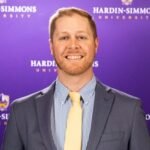 Brady Holcomb
Brady Holcomb
PT, DPT
Board Certified Orthopedic Clinical Specialist
Dry Needling Certified
LSVT BIG Certified
Assistant Professor of Physical Therapy
 Dr. Joe McCormick
Dr. Joe McCormick
PT, DPT, SCD
Board Certified Clinical Specialist in Orthopedic Physical Therapy
Certified Orthopedic Manual Therapist
Certified Specialist in Dry Needling
Assistant Professor of Physical Therapy
 Dr. Dennis O’Connell
Dr. Dennis O’Connell
PT, Ph.D., FACSM
Certified Strength and Conditioning Specialist
Certified Ergonomic Assessment Specialist
Professor of Physical Therapy
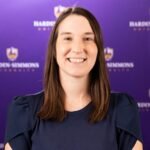 Allison Robinson
Allison Robinson
PT, DPT
Board Certified Clinical Specialist in Neurologic Physical Therapy
Certified in Neuro-Integrative Functional Rehabilitation and Habilitation®
Assistant Professor of Physical Therapy
 Dr. Marsha Rutland
Dr. Marsha Rutland
PT, MEd, ScD
Board Certified Clinical Specialist in Orthopedic Physical Therapy
Certified Orthopedic Manual Therapist
Certified Specialist in Dry Needling
Certified Strength and Conditioning Specialist
Professor of Physical Therapy
 Dr. Elizabeth (Beth) Schaeffer
Dr. Elizabeth (Beth) Schaeffer
PT, DPT
Certified Vestibular Rehabilitation Specialist
Certified Specialist in Dry Needling
Assistant Professor of Physical Therapy
 Dr. Justin Tammany
Dr. Justin Tammany
PT, DPT, ScD, MBA
Board Certified Clinical Specialist in Orthopedic Physical Therapy
Certified Orthopedic Manual Therapist
Associate Professor of Physical Therapy, Director of PT Admissions
RUTLAND, Marsha D., Karla M. ESPINOSA, Alyssa K. PEVEHOUSE, Sarah M. BROOKS, and Austin P. ALEXANDER. Muscular Axillary Arch from Bilateral Latissimus Dorsi and its Clinical Implications. American Association of Clinical Anatomists Annual Conference, Ft. Worth, TX 6-15-22
Kathryn NORTON, ALEXANDER, Austin P., and Marsha D. RUTLAND. Midsagittal Dissection of the Brain in Situ. American Association of Clinical Anatomists Annual Conference, Ft. Worth, TX 6-14-22
RUTLAND, Marsha D., and Cheyanne N. HAMILTON. Department of Physical Therapy, Hardin-Simmons University, Abilene, TX, 79698, USA. Middle Ear Dissection in the Anatomy Cadaver Lab to Improve Future Education. American Association of Clinical Anatomists Annual Conference, Ft. Worth, TX 6-15-22
McCormick J, Lotrich K, Mott N, Price T, Sitton B, McIntosh M. Multifidi Activation Using Volitional Preemptive Abdominal Contraction During Different Isometric Barbell Deadlifts Hardin-Simmons University Department of Physical Therapy, Abilene, TX.
Rutland MD, Alexander AP, Armstrong MJ, Mott N, Lotrich K, Mcintosh M. Spinal Arachnoid Calcifications vs. Arachnoiditis Ossificans- A Discovery of Two Disease Processes (poster). American Association of Clinical Anatomists Annual Conference, July 2021.
Norton KS, Alexander AP, Rutland MD. Anatomic Variation of Musculocutaneous Nerve. (poster). American Association of Clinical Anatomists Annual Conference, July 2021.
Marsha D. Rutland, Alexander Austin P., Mark Armstrong, Natalie Mott, Kassidy Lotrich and Morgan McIntosh. Spinal Arachnoid Calcifications vs. Arachnoiditis Ossificans-A Discovery of Two Disease Processes. (Poster) Department of Physical Therapy, Hardin-Simmons University, Abilene, TX, 79698, USA.
Armstrong M, Tammany J, Haley J, Herbsleb S, Kelley A, Martin C, Resendiz S. Reliability or Convenience? A survey of tool preference for measuring spinal range of motion in physical therapy practice. Hardin-Simmons University Department of Physical Therapy, Abilene, TX.
Armstrong MJ, Easterling EH, Hoermann JD, Jackson GA, Torres JA. Prevalence of Lower Extremity Musculoskeletal Disorders in Collegiate Marching Band Members. Hardin-Simmons University Department of Physical Therapy, Abilene, TX.
Armstrong MJ, O’Connell DG, Crook TA, Gosnell MA, Gray MM. Exploring a Modified Goniometric Measure of Hip Flexor Length Accounting for Pelvic Tilt. (poster). Virtual APTA-CSM 2-2021.
Armstrong MJ, O’Connell DG, Barger BA, Brabham TD, Hansen CA, Lamm WS, Switzenberg BD. Determining the Validity and Reliability of Easy Angle® and the IPhone Measurement App for Measuring Scapular Tilt. Hardin-Simmons University Department of Physical Therapy, Abilene, TX.
Armstrong MJ, Rutland MD, Baker KN, Ball AE, Dees EE, Ivey JM. Lower Abdominal Muscle Strength: Correlation of Double Limb Lowering Test and Prone Plank Test (poster). APTA Next Annual Convention. Chicago, IL. 6-13-19
Goodson N, Brewer JF, Johnson K, Mejia C, Pruitt L, Schnider C. Functional Changes from Various Subject-Specific Training Programs in Pediatric Ambulatory Individuals with Cerebral Palsy. Hardin-Simmons University Department of Physical Therapy, Abilene, TX, 2022.
Truong C, Brewer JF, Jesko L, Shepherd J, Vargas J, Davis E. The Effects of Body-Weight Supported Treadmill Training on Gait and Balance for Two Individuals with Chronic Traumatic Brain Injury. Hardin-Simmons University Department of Physical Therapy, Abilene, TX, 2021.
Chapman EM, Brewer JF, Lester GM, O’Beirne CE. Grit, Spirituality, and Resilience in Parents with Children with Special Needs. Hardin-Simmons Department of Physical Therapy, Abilene, TX. 3-2020
O’Connell JK, Brewer JF, Drennen AN, Dubose BT, Cantwell DA, Tiemeyer CB. Role of Resilience and Stress in Predicting Academic Success in Physical, Occupational, and Speech Therapy Students (poster). APTA-CSM. Denver, CO, 2020.
Crumley JP, Brewer JF, Fannon SK, Offringa AO, Womble EA. The Effect of Neurosensorimotor Reflex Integration in Pediatric Toe-Walking on Sensory Processing, Foot Posture, Coordination, Balance, and Gait. Hardin-Simmons University Department of Physical Therapy.3-2019
O’Connell D, Brewer JF, Holly C, Davis T, Hiller J, Renfro S. The acute effects of a robotic exoskeleton leg orthosis on balance, gait, and sit-to-stand function as well as technology usage attitude among older adults. Biomedical Journal of Scientific and Technical Research, 20(4):15281-286 (BJSTR. MS.ID.003493), 2019.
O’Connell JK, Brewer JF, McCormick J, Hinman M, Allen L, Frazier R, Morris A. Relationship Between Emotional Intelligence Scores and Admission Interview Scores in Prospective Physical Therapy Students (poster). APTA-CSM. Washington, DC, 2019.
Brewer JF, Harris RW, Hamilton JW, Vause JS, Villarreal AL. The Effects on Balance and Gait on the Advanced Elderly following Aerobic Training on the Alter-G Treadmill (poster). APTA-CSM. New Orleans, LA, 2018.
Brewer JF, Lewis AD, Lucas KJ, McCright J, Mitchell JL. Reliability of the Alter-G Anti-Gravity Treadmill Two-Minute Walk Test and its Effect on Balance in the Elderly (poster). APTA-CSM. San Antonio, TX, 2017.
Rutland MD, Brewer JB, Heald C, Henderson C, Schimpf M, Shaver C. Diagnostic Implications of a Student’s First Patient: Findings Beyond the Given Cause of Death of Pneumonia and Congestive Heart Failure (poster). APTA-CSM. San Antonio, TX, 2017.
Jumper JD, O’Connell DG, Pitts-Richardson C, Shaffer E. Acute Effects of BFR Therapy with 100% Occlusion on VMO Muscle Thickness and Insertion Angle (poster). APTA Next Annual Conference, Abilene, TX, 2022.
Jumper JD, Herbel S, Johnson P, Kiser M, Yowell K, Stewart T. The Effects of a Vibratory Metronome on Arm Swing During a Ten-Meter Walk Test. Hardin-Simmons University Department of Physical Therapy, Abilene, TX, 2022.
Jumper J, Bird M, Cleveland J, Faber M, Johnston M, Roberts M. Using the Recognize Laterality Application to Predict Hoehn and Yahr Stage on the Unified Parkinson’s Disease Rating Scale. Hardin-Simmons University Department of Physical Therapy, Abilene, TX. 3-2021
Jumper J, O’Connell D, Hicks B, Klosterman D, Carl C, Bell C. Elevated Resting Pulse Pressure and Blood Pressure in Patients Receiving Outpatient Physical Therapy. (poster)-Virtual APTA NEXT Conference, 6-4-2020.
Jumper JD, Glover AL, Jordan DJ, James ZE. The Effects of Music Cued Treadmill Training on Spatiotemporal Gait Parameters in People with Parkinson’s. Hardin-Simmons University Department of Physical Therapy, Abilene, TX. 3-2020
Jumper J, Brock H, Cook S, Graves C, Wong N. Physical Therapy Clinical Instructor Impressions of Student Video vs. Paper Biosketches in the Clinical Education Setting. Hardin-Simmons University Department of Physical Therapy, Abilene, TX. 3-2019
McCormick J, Lotrich K, Mott N, Price T, Sitton B, McIntosh M. Multifidi Activation Using Volitional Preemptive Contraction During Different Isometric Barbell Deadlifts. Hardin-Simmons University Department of Physical Therapy, Abilene, TX, 2021.
McCormick JB, Craig AW, Duce JT, Hartman OM, Hoffart EP, Lariviere BL. The Effect of Blood Flow Restriction (BFR) on Quadriceps Muscle Activation. Hardin-Simmons University Department of Physical Therapy, Abilene, TX 3-2021
McCormick J, Ratliff C, Sazon J, Ward A. The Effect of Alter Gravity Body Weight Supported Running on Workload: A Protocol PILOT Study. (Virtual Poster) –APTA CSM 2021.
McCormick J, Barnett K, Eunice J, Stark T, Walling A. Effects of volitional preemptive abdominal contraction on multifidus activation when performing maximal isometric barbell front and back squats. (Poster) – APTA CSM-Denver 2020.
O’Connell DG, Higgins S, Jumper JD. The Impact of Disposable Masks on Dynamic Lung Function in Healthy Young Adults.
O’Connell DG, O’Connell J, Brewer B, Bessire B, Carrico M, MacIntyre C,
Queen-Shelburne M, Wilson E. The Certainty of Wheelchair Fit Survey: Validity and Reliability.
O’Connell D, O’Connell J, Brewer B, Bessire B, Carrico M, MacIntyre C, Queen-Shelburne M, Wilson E. Development of the Certainty Survey for Wheelchair Fit and Effective Utilization. Hardin-Simmons University Department of Physical Therapy, Abilene, TX. 3-2021
O’Connell D, Wortham A, D’Arezzo M, Coxe B. Within and Between Day Reliability of the Unsupported Upper Limb Exercise Test in Patients with Pulmonary Fibrosis. Hardin-Simmons University Department of Physical Therapy, Abilene, TX. 3-2020
O’Connell DG, Richeson SM, Moeller MB, Stephens JW, Key DJ. The Effect of Forearm Positioning on Maximal Peak Elbow Flexion Force Among Nursing, Occupational Therapy and Physical Therapy Students. Hardin-Simmons University Department of Physical Therapy, Abilene, TX. 3-2019
O Connell D, O’Connell J, Rutland M. A Comparison of Four Ability Tests in Young Adults. (poster) APTA-CSM- New Orleans, LA. 2-17-18.
O’Connell J, Rutland M, Haverlah S, Hardage C, Craigsmile M. Use of Mneumonics in First Year DPT Students. Virtual APTA-CSM 2-2021
O’Connell JK, O’Connell DG, O’Connell KK. 2020. Psychological Benefits of Physical Activity in Children with Mental Health Disorders. International Journal of Child Development and Mental Health. 8(1):53-62.
Rutland, MD, Tammany J, Trammell T. Ossification of the Posterior Longitudinal Ligament. J Ortho Sports Phys Ther. JOSPT Cases 2023;3(2):1-2. Epub: 13 March 2023. doi:10.2519/josptcases.2023.10929
Rutland MD, Faz L, Gray A, Shook P, Taylor M. The Relationship of the Beighton Scale, Abdominal Strength and Prevalence of SacroIliac Pathologies.(Poster). Submitted to APTA-CSM for 2-2022.
Rutland M, Stueart H, Pruitt L, Angello K, Mannon C. Speculation of Neurological Conditions in a Cadaver with Multilevel Stenosis. (poster) American Association of Clinical Anatomists Annual Conference. Virtual Conference, 6-2021.
Rutland MD, Alexander AP, Arnold A, Herbel S, Johnson P, Yowell K. Abnormal Clavicle and Accessory Subclavius Posticus Muscle. (Poster) American Association of Clinical Anatomists Annual Conference. Virtual Conference, 6-2021.
Rutland M, Fisher K, Lopez C, Pilcher L. Cervical ROM Acute Changes with Dry Needling of the Levator Scapulae . (poster) Virtual APTA-CSM 2-2021
Rutland, M, O’Connell D, Richter A, Sammann M, Stuart M, Taylor K. Diagnostic Ultrasound of Transverse Abdominis with Double Limb Lowering Test. (poster). APTA-CSM. Denver, CO 2-13-20
Rutland M, O’Connell J, Eames J. What to Discuss before Entering the Human Cadaver Dissection Lab: Student Preconceived Perceptions (poster). APTA-CSM. Denver, CO. 2-14-20
Rutland MD. Armstrong M, Graves M, Richter A, Sammann M, Walling A. Could a Large Umbilical Hernia be Associated with a Connective Tissue Disease? (poster). American Association of Clinical Anatomists Annual Conference. Tulsa, OK 6-12-19
Rutland MD. O’Connell D, Armstrong M, Van Cleave, L. Interprofessional Collaborative Teaching of Patient Transfers by Doctoral Physical Therapy Students to First Year Nursing Students (poster). APTA-ELC. Jacksonville, FL.10-12-18
Rutland, MD, Allen L, Ball A, Morris A, Westbrook M. The Possibility of Saint’s Triad and the Diagnostic Implications for a Physical Therapy Student (poster). American Association of Clinical Anatomists Annual Conference. Atlanta, GA. 7-11-2018
Rutland, MD, Armstrong M, Carter B, Flores S, Nfodjo A, Spruiell J. Upright Pose versus Thoracic Roll stretch and its effect on Posture in Sedentary Office Workers (Poster). APTA- NEXT Conference, Orlando, FL, 6-29-18
Schaeffer B, Brown A, Cruz H, Freeman S, Martin B, Nickerson C. Influence of Shoulder Range of Motion and Strength on Tennis Forehand Velocity in Collegiate Athletes (poster). APTA Combined Sections Meeting. San Antonio, TX. February 4, 2022.
Schaeffer B, Brown A, Cruz H, Freeman S, Martin B, Nickerson C. A Stroke of Genius: The Influence of Shoulder Range of Motion and Strength on Tennis Forehand Velocity in Collegiate Athletes. Hardin-Simmons University Department of Physical Therapy, Abilene, TX. 3-2021
Schaeffer BH, Austin RD, Stanton BJ, Torres D. Reaction Time in Individuals with Mild Dementia vs. Healthy Individuals. Hardin-Simmons University Department of Physical Therapy, Abilene, TX.3-2020
Johnson P, Rashiwala A, Tammany J, Brewer J, O’Connell D. All Body Weight Supported Treadmills are Not Alike: Differences in Hip and Knee Kinematics (poster). Combined Research Sections Meeting (CSM) of the American Physical Therapy Association. Orlando, FL (virtual), 2021.
Tammany JE, Day AA, Flowers MA, Heidenheimer LK, Woods RW. Use of the HEXACO Personality Inventory-Revised to Predict Academic Success in the First Semester of a Doctor of Physical Therapy Program. Hardin-Simmons University Department of Physical Therapy, Abilene, TX. 3-2019
Tammany J, Blomdahl S, Merryman S, Petree A, Rendon S, Schultz E. Prevalence and Factors of Burnout among Physical Therapists in the United States of America. Hardin-Simmons University Department of Physical Therapy, Abilene, TX. 3-2021
Tammany JE, Rogers JA, Latham SE, Sugar TS. The Effect of Grunting on Baseball Pitching Velocity. Hardin-Simmons University Department of Physical Therapy, Abilene, TX. 3-2020
Tammany JE, Day AA, Flowers MA, Heidenheimer LK, Woods RW. Use of the HEXACO Personality Inventory-Revised to Predict Academic Success in the First Semester of a Doctor of Physical Therapy Program. Hardin-Simmons University Department of Physical Therapy, Abilene, TX. 3-2019
Tammany JE, O’Connell DG, Latham SE, Rogers JA, Sugar TS. The effect of grunting on overhead throwing velocity in collegiate baseball pitchers. Int J Sports Sci Coach 2021;
Tammany JE, O’Connell JK, Allen BS, Brismée JM. Are productivity goals in rehabilitation practice associated with unethical behaviors? Arch Rehabil Res Clin Transl 2019;1:100002.
Tammany JE, O’Connell JK, Allen BS, Brismée JM. Physical Therapy Productivity Standards: Are Organizations Sacrificing Ethics for Revenue? (Poster) APTA-CSM. Washington, D.C. 1-26-19
Tammany JE, O’Connell JK, Allen BS, Brismée JM. Characteristics of Productivity Standards in Physical Therapy Practice: Results of a Cross-Sectional Survey. (Poster) APTA-CSM. Washington, D.C. 1-26-19
To prepare individuals who demonstrate excellence in the practice of physical therapy and are enlightened by Christian faith and values.



